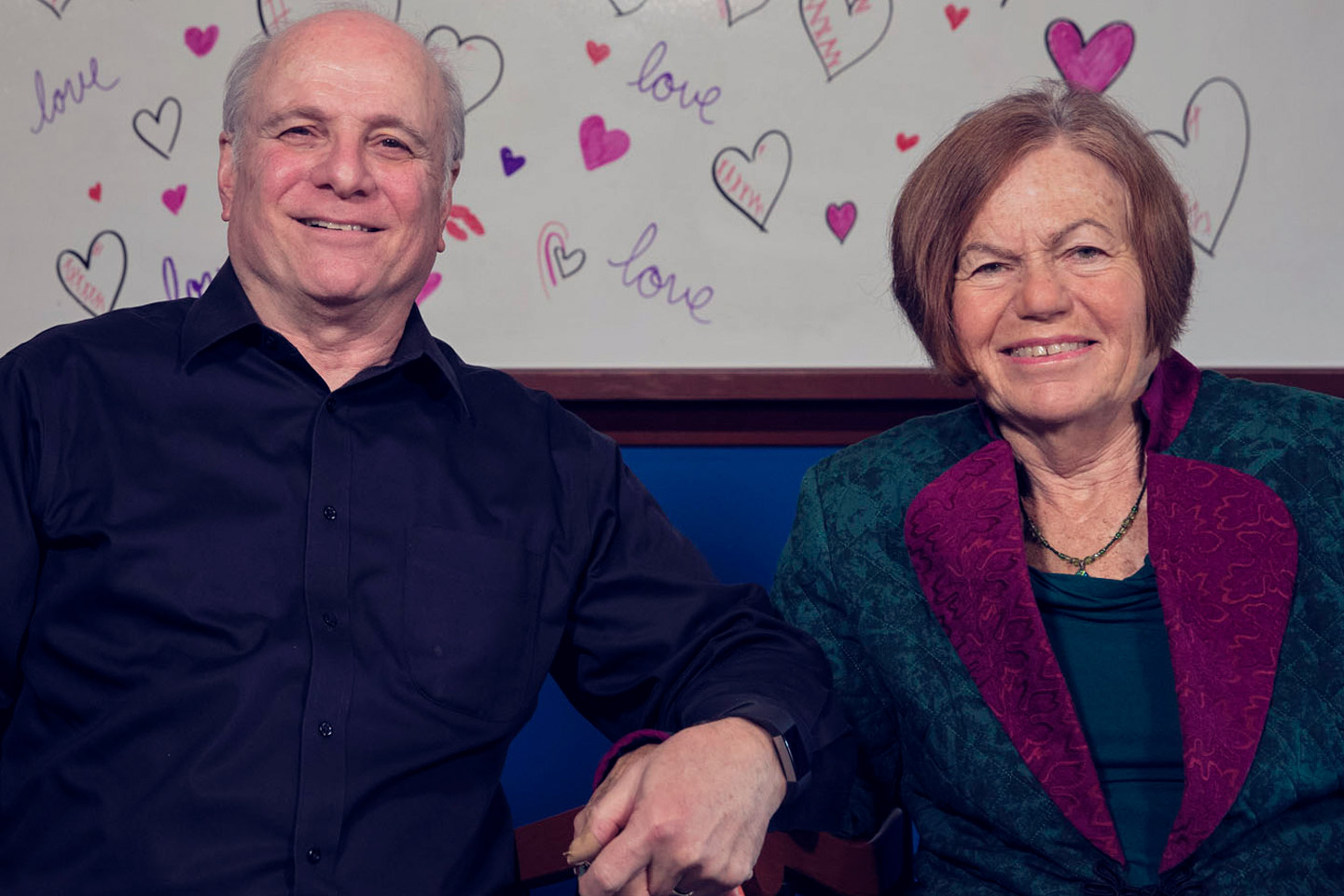University of Virginia professor Peter Sheras and wife, Phyllis Koch-Sheras, have been married for 41 years. That alone would qualify them to offer marriage advice. But the pair are also psychologists and professional marriage counselors.
Peter and Phyllis joined UVA Today on Monday for a lively Valentine’s Day-themed Facebook Live session, which opened with a UVA version of “The Newlywed Game,” aptly called “The Hoolywed Game.” Not surprisingly, in answering several questions about their married lives, the couple got a near-perfect score.
The Sherases then got down to business, sharing tips on how to keep relationships fresh and vital. All of the advice – and more – can be found in their book, “Lifelong Love: Four Steps to Creating and Maintaining an Extraordinary Relationship.”
This “Sparknotes” version of the book will help you and your partner live your best couple life.
Resist the ‘Individualistic’ Nature of Our Culture
Peter, who chairs the Department of Human Services in UVA’s Curry School of Education, said couples should move from “me” to “we.”
“Imagine that instead of being two separate people, you are one person,” he said. “Whatever happens to any part of the couple happens to the whole” couple, he said. “We coach the couple to take on whatever the problem is, rather than the individual.”
Know Your Couple ‘Type’
In their book, Peter and Phyllis describe four types of couples.
“The first one, we call the ‘romanticized couple,’” Phyllis said. “You think that you have to do everything the same and do everything together all the time and be totally enraptured 24/7.”
When those intense feelings start to fade, Phyllis said the “romanticized couple” mistakenly thinks something is terribly wrong and sometimes even ends the relationship.
In the “traditional couple,” each person assigns themselves roles in the marriage. For example, one person is the wage-earner and one person takes care of the kids. If you do that over and over for years, Peter said, a lot of resentment can build up. The roles also tend to be gender-defined in ways that were more traditional years ago.
The “self-focused” couple is working so independently from one another that they can lose the sense of their marriage and feel like they never see each other. “A lot of times we see this in couples where they are trying to parent their kids and lead their jobs and their lives, so they divide everything up.”
The fourth couple type, which Peter and Phyllis consider to be the healthiest, is called “dynamic” or “co-creating.” In this relationship, couples are good at accommodating change in one another and over time.
“To think that you are going to be in a relationship with the same person for 40 years or 50 years or 60 years – my gosh, how can you possibly do that, given how much you are going to change or they are going to change?”
Rolling with the punches is the way to success, they said.
Create a Vision Statement
During counseling sessions, Peter and Phyllis will ask their clients why they got into their relationship. What did they expect it to be when they got married?
The answer to that question is what the team calls a vision statement, much in the same way that a business creates a mission statement.
The Sherases also ask their clients to focus on what they feel is missing in a relationship. “You state it as a possibility” to help make it happen, Phyllis said.
Peter and Phyllis said they have made a new vision statement every three months for the last 25 years.

Psychologists (and marriage counselors Peter and Phyllis Sheras offered relationship advice Monday on UVA Today’s Facebook Live. (Photo by Dan Addison, University Communications)
What is their current mission statement? “We are laughing with life,” they said in unison. The pair realized they needed more laughter in their lives because they’d been struggling with some medical issues. “Just to have that positive attitude really helps,” Phyllis said.
Four Steps to Creating and Maintaining an Extraordinary Relationship
The first step is commitment.
“If you want to be in this relationship, you have to be committed – not just to the other person, but to the entity of your relationship,” Peter said.

Cooperation is the second step.
“Once you are committed to this couple entity, then you have to have ways to cooperate to create what you want to have happen in that relationship,” Phyllis said. Turning your complaints into requests and cooperating to find a solution, she added, is a crucial component to this step.
Communication is the next stop.
“If you want to cooperate, then communication is really important,” Peter said. Of course, listening is key. The couple give their clients exercises to hone their listening skills. “There is one called ‘Five and Five,’” Phyllis said. “Each person takes five minutes to talk and the other person just listens, doesn’t say anything. It’s remarkable how powerful that can be.”
The fourth and final step is community.
“One of the things that we learn is that when couples are functioning well, they don’t have a lot of agreement” when it comes to nurturing marriages. Peter said. “So we encourage people to get together with other couples,” which allows people to be together and talk about being in their relationships.
“We don’t really have ‘couples bars,’” Phyllis added. “We have singles bars.”
Media Contact
Article Information
February 13, 2018
/content/keeping-love-rocks-and-full-sail

